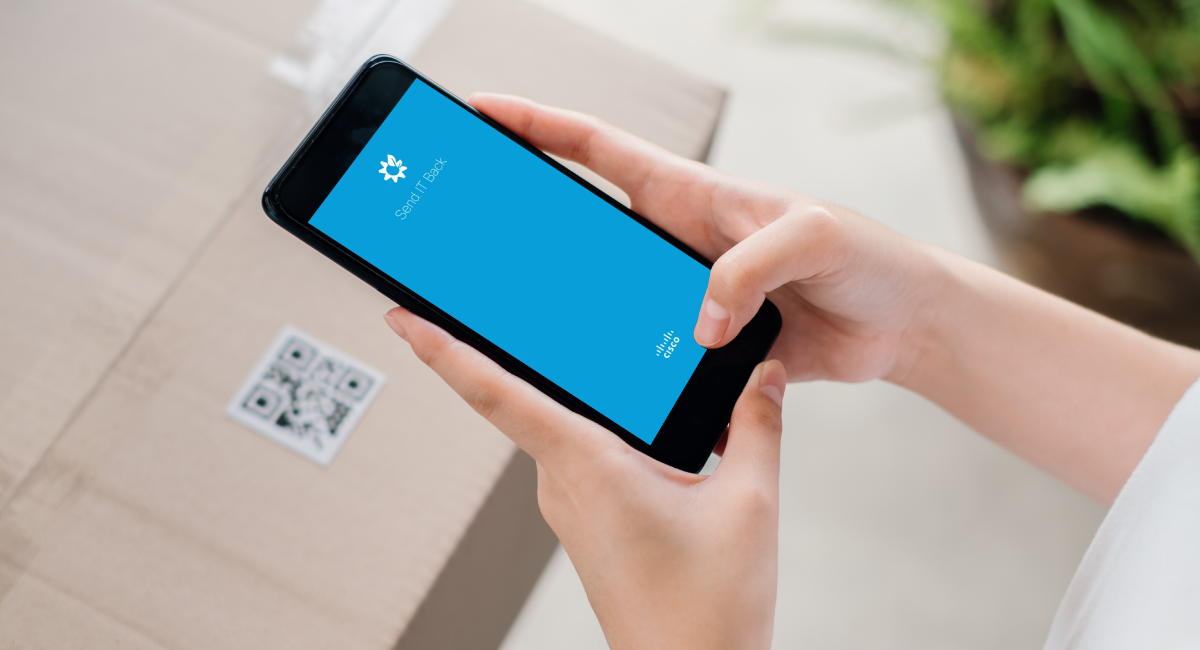This is a post by Katie Schindall, Director, Circular Economy.
The World Economic Forum predicts the global population will produce 75 million metric tonnes of e-waste by 2030. This is the same weight as 25% of all cars in Europe, or 150 million grand pianos.
For many years, businesses have produced to meet demand, but little thought was given to what happens once that need is met. What do you do with the stuff you no longer need or want? I spend a lot of time thinking about this. Knowing that “less than 20% of global waste is recycled” genuinely keeps me up at night.
My circular economy team and I, together with the wide network of people we partner with, spend every day working to reduce consumption of natural resources and design out waste from the outset of every product, service and operation we engage in as a company across over 160 countries.
Everything we have and do in our lives uses energy and resources. Our goal is to fundamentally shift our behaviours, infrastructure, policies and operations so we are not consuming resources faster than our planet can regenerate them, instead all playing our roles in a larger, circular system defined by resource conservation and reuse.
We are witnessing this starting to happen. Across a wide range of industries, citizens and companies are reorienting around repair, reuse, and the recirculation of goods. This includes developing the systems required to support increased use of reusable packaging instead of throwaway containers, and Generation Z, like my niece, reimagining newness. But we still have so far to go.
In business, we have a responsibility to provide our customers with the outcomes they seek in ways that respect the planet. Just as importantly, we need to help our customers and partners see the value in a different and more responsible type of offering.
Changing behaviour
The sheer complexity of the circular economy can seem overwhelming. We will only succeed if we go after it together. From hardware and software to solution deployment - we can help customers rethink their network infrastructure to be more energy efficient and sustainable, while enabling them to track and manage assets to be smarter about how and where to deploy, upgrade, and return hardware across its lifecycle.
Let’s take product design as an example. We are working towards a state where, from the moment someone defines the product requirements to the point where the finished product is being packaged for delivery, our circular design principles are being considered and integrated, and acting as accelerants for innovation.
For example, the modular design of our IR1101 industrial router means that upgrading over time, for example to 5G, only requires the replacement of a single module and not the whole device. The use of our Silicon One chipset in the Cisco 8201 router can reduce network energy consumption by 300% while doubling network bandwidth compared to previous versions. Cisco Refresh offers remanufactured products with the same warranty as new products, benefiting from product design intended to improve reuse and repair. Ultimately, our goal is for 100% of new Cisco products and packaging to incorporate circular design principles by 2025.
Send IT Back
An important part of our circular economy strategy is to increase product returns at end of use. This is critical to our ability to responsibly, securely transition equipment from its first life to its next, whether that is as a whole product, components, or materials entering the recycling value chain.
The Send IT Back mobile app makes it simple for Cisco customers to benefit from our takeback programme and join the circular economy. They just need to download the app, take a quick photo of the kit in its box and hit ‘send.’ Cisco will then arrange for the equipment to be collected and evaluate it for its next step on the circular journey, helping avoid unnecessary waste and minimizing environmental impact. All free of charge.
We also see an opportunity for our partners to differentiate themselves by building a takeback process into their value proposition and service offerings to customers. Technology solution provider WWT uses the Send IT Back app in the US to simplify its reverse logistics and disposal services, increasing its ability to predict and schedule product shipping dates, and streamlining the process of collecting, recording and storing equipment for recycling and reuse.
I am excited to see the Send IT Back app expand outside the US, with the app now downloadable on both iOS and Android devices and available in all 27 European Union countries and the UK. We expect to expand the application to additional countries in the near future.
Adopting a circular economy mindset
As a global tech leader, we have a responsibility to support our customers in meeting their sustainability goals and helping to drive changes in behaviour. Everyone in Cisco’s ecosystem can act as guides on the journey to circular economy practices.
It’s exciting to see increasing numbers of people asking for more information and training on the circular economy. They’re thinking about what they can do – and pushing for more. It’s a transformation we're now almost trying to keep up with, as much as we are trying to drive it. That signals a huge shift in mindset as we strive towards a sustainable future for all.
###



